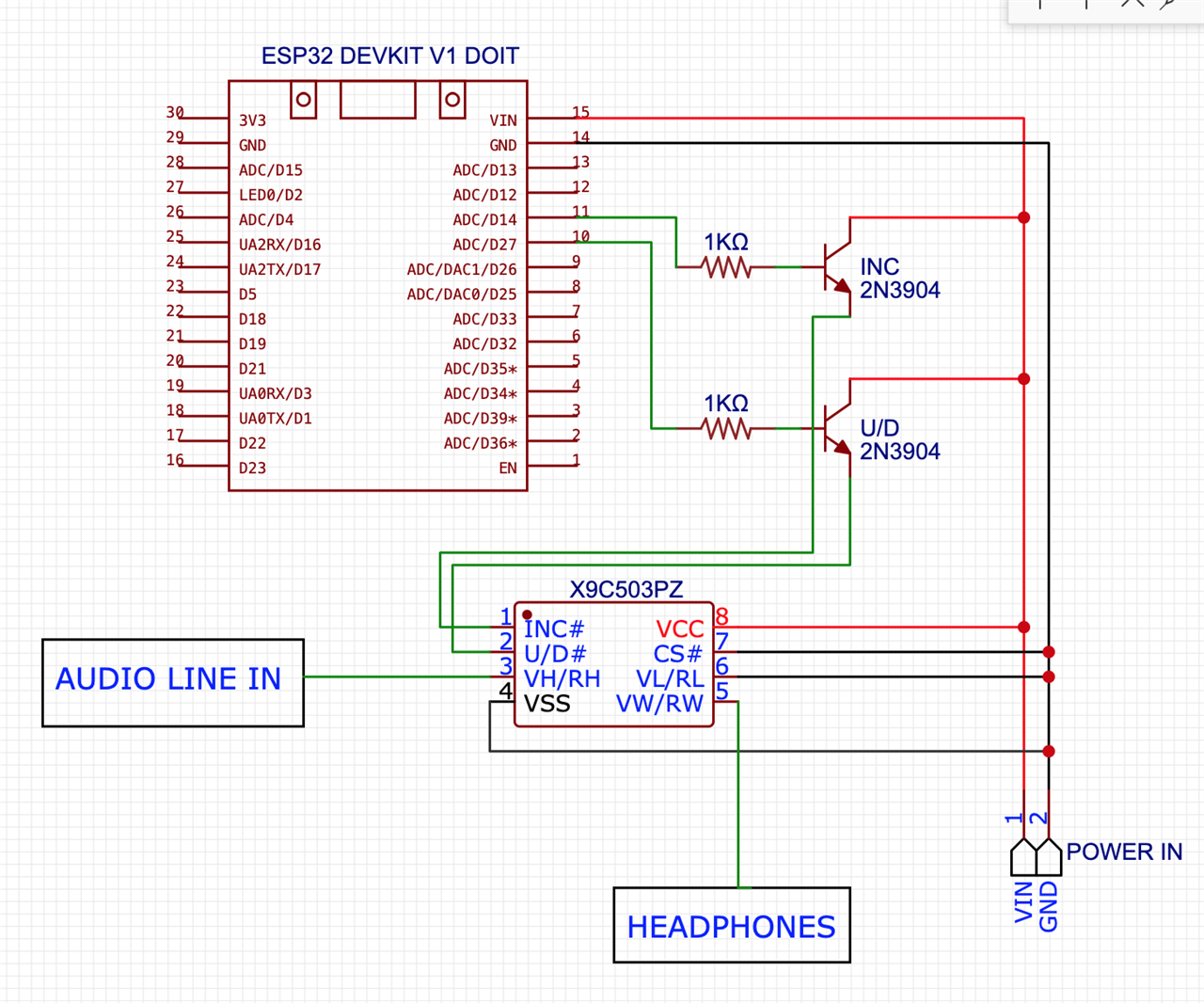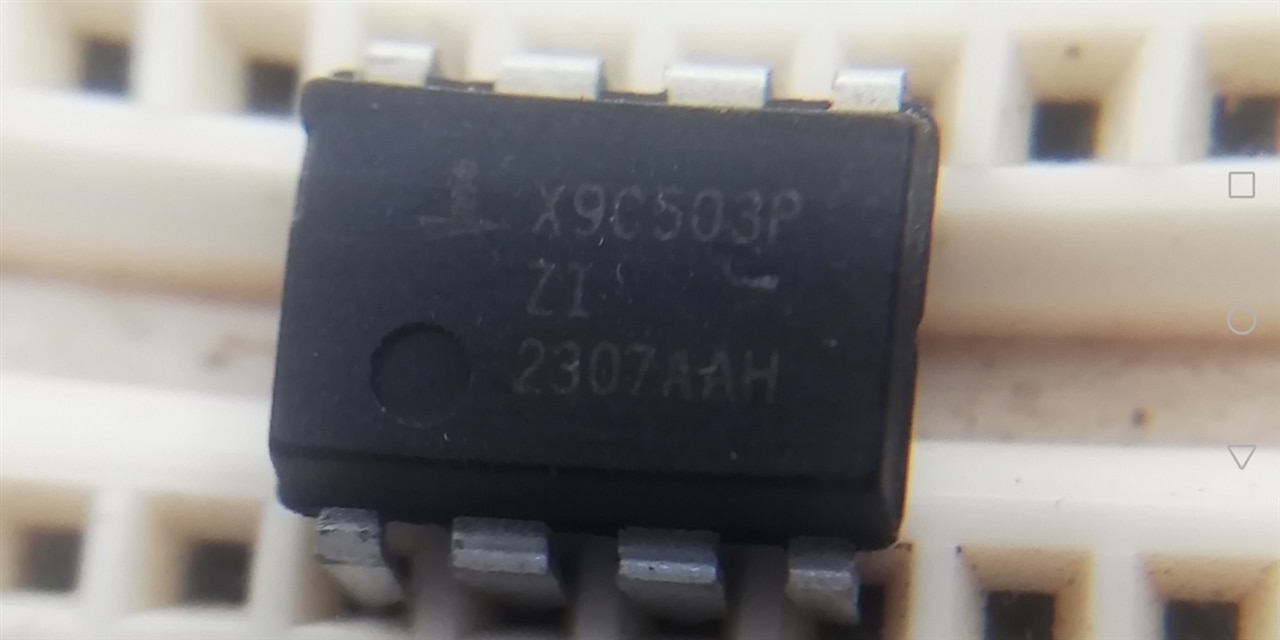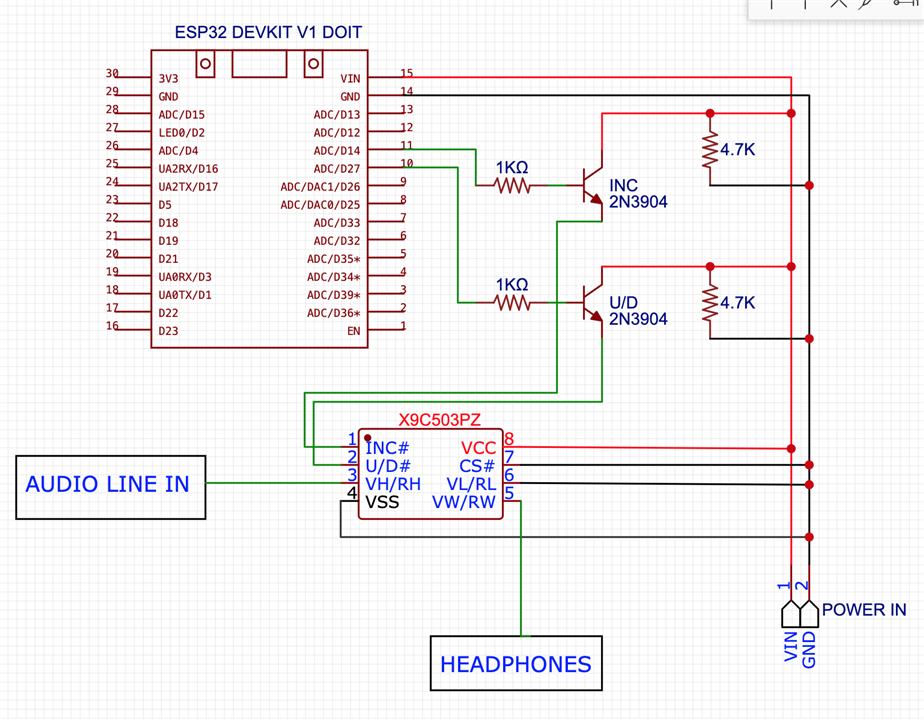I can't get X9C503 to work with ESP32 but it can with Arduino Mega.
What do I need --> To be able to operate the X9C503 to lower the volume of an audio line input. I don't want to use common manual potentiometers.
X9C503 Scheme:
On Arduino Mega I connect everything directly to the board and the operation is correct.
In ESP32 if I connect it to the board it doesn't work, so I have used the 2N3904 diode for the 'INC', 'U/D' pins (I have also tried with 'CS' but Arduino Mega does it well being grounded), and It works but it doesn't do it well, I describe the problem:
You have to enter values between 0 and 99, and in general it does it well, for low values the volume goes down and for high values the volume goes up. I detected the problem by always entering the same value.
In this case it was '91', if I enter it several times in a row I get different results, normally the volume remains constant but sometimes it goes up, other times it goes down and even total silence occurs
With Arduino Mega I enter the '91' 500 times and the
The volume never changes, it is constant and its operation is always correct.
What could be the problem?
What other component can I use?
As an alternative, I have tried the FM62429, with ESP32 it works correctly, but it has the amplification function that does not suit me. For the line input I already use 22kΩ resistors, then the potentiometer and finally the MSGEQ7, it doesn't make much sense to change a potentiometer to lower the voltage and replace it with a component that can amplify. I can limit the FM62429 by code, for example, to 60% and only use it to lower the volume, although I don't think it is a very elegant solution.
Audio Line In -> 22kΩ resistors -> X9C503 -> MSGEQ7
Audio Line In -> 22kΩ resistors -> FM62429 -> MSGEQ7
Any ideas or suggestions?




